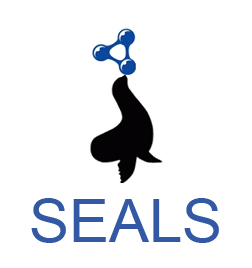

The Anatomy track of the 2011 campaign consists of finding alignments between the Adult Mouse Anatomy and a part of the NCI Thesaurus (describing the human anatomy). The task is placed in a domain where we find large, carefully designed ontologies that are described in technical terms. Besides their large size and a conceptualization that is only to a limited degree based on the use of natural language, they also differ from other ontologies with respect to the use of specific annotations and roles, e.g. the extensive use of the partOf relation. The manual harmonization of the ontologies leads to a situation, where we have a high number of rather trivial mappings that can be found by simple string comparison techniques. At the same time, we have a good share of non-trivial mappings that require a careful analysis and sometimes also medical background knowledge.
IMPORTANT NEWS:
Again, the evaluations will be run with support of SEALS. However, there is a major change compared to 2010. In 2010 we used the webbased online evaluation service of the SEALS platform (http://www.seals-project.eu/ontology-matching-evaluation-ui). This service can still be used for testing purpose. In 2011 we will run your matching systems on the SEALS platform! This requires that your wrap your matching tool in a way that allows us to execute it on the SEALS platform. We are working currently writing a tutorial that describes the required steps in detail, it will hopefully be finished soon.
Again, we will fix some flaws in the reference alignment. This work is not yet done, but will be done for the final evaluation. So far we know about a very limited number of incorrect correspondences in the reference alignment. For example, there are some correspondences that match a concept A on a more specific concept B. However, we know now that there is also a superconcept B' of B, which is the equivalent to A. The required corrections have been detected by Elena Beisswanger, who has been working with the dataset in some experiments. Note that we are always happy to be informed on similar observations. Do not hesitate to contact us.
IMPORTANT NEWS: We meanwhile fixed these flaws (see new dataset below).
The ontologies for the 2011 evaluation will not be modified (probably).
These subtasks will be dropped 2011. In 2011 we will only evaluate the results of #1 and #4. We will still enumerate these subtasks as #1 and #4 to avoid confusion when comparing results again results of the previous years. It might be the case that subtasks #2 and #3 come back again in 2012, when the SEALS platform allows to run tools in a more flexible way with different settings. Our decision is also based on the fact that the comparison of the results for these subtasks was not well defined.
Maybe this subtask will be extended. This depends on the progress of the SEALS platform. The idea is to run your system on different partial alignments of the reference alignment that are not known in advance (!).
Use the following ontologies as input for your matching system:
Download 2011 dataset here! (links point to the version stored in the SEALS repositories)
The anatomy track consists in 2011 of two subtasks. Subtask #1 is obligatory for all participants of the anatomy track, while subtask #4 is optional.
In the evaluation of subtask #4 we compare the results of subtask #1 with the results of #4 to see whether or not the additional information had positive effects.
Not yet fixed, probably you have to submit your wrapped tool (instead of the generated alignments) to (a) the organizer of this track or you have to (b) directly upload it in the SEALS platform.
The schedules given at http://oaei.ontologymatching.org/2011/index.html#schedule is also binding for the anatomy track
We would like to gratefully thank Martin Ringwald and Terry Hayamizu (Mouse Genome Informatics - http://www.informatics.jax.org/), who provided us with an intial reference mapping for the matching task of this track.
We would like Elena Beisswanger for improving the datasets with respect to several problems (see description available here) and the remark above. Thanks a lot!
In addition, we would like to thank all of the participants of the OAEI-07, OAEI-08, OAEI-09, and OAEI-10 anatomy track for hints and discussions with respect to the realization and evaluation of the last year. Even more, we thank the people that helped us in wrapping their tools for testpurposes.
This track is organized by Christian Meilicke and Heiner Stuckenschmidt and supported by the SEALS project. If you have any problems working with the ontologies, any questions related to SEALS, or any suggestions related to the anatomy track, feel free to write an email to christian [at] informatik [.] uni-mannheim [.] de.